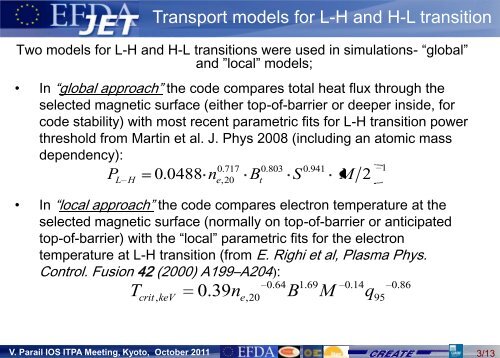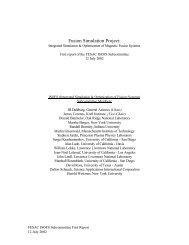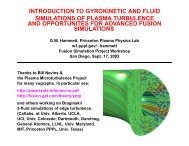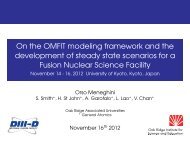P - Our Home Page
P - Our Home Page
P - Our Home Page
Create successful ePaper yourself
Turn your PDF publications into a flip-book with our unique Google optimized e-Paper software.
Two models for L-H and H-L transitions were used in simulations- “global”<br />
and ”local” models;<br />
• In “global approach” the code compares total heat flux through the<br />
selected magnetic surface (either top-of-barrier or deeper inside, for<br />
code stability) with most recent parametric fits for L-H transition power<br />
threshold from Martin et al. J. Phys 2008 (including an atomic mass<br />
dependency):<br />
0.<br />
717 0.<br />
803 0.<br />
941<br />
PL H 0. 0488 ne,<br />
20 Bt<br />
S M<br />
• In “local approach” the code compares electron temperature at the<br />
selected magnetic surface (normally on top-of-barrier or anticipated<br />
top-of-barrier) with the “local” parametric fits for the electron<br />
temperature at L-H transition (from E. Righi et al, Plasma Phys.<br />
Control. Fusion 42 (2000) A199–A204):<br />
V. Parail IOS ITPA Meeting, Kyoto, October 2011<br />
Transport models for L-H and H-L transition<br />
T 0.39n<br />
B M q<br />
0.64 1.69 0.14 0.86<br />
crit, keV e,20<br />
95<br />
2<br />
1<br />
3/13





